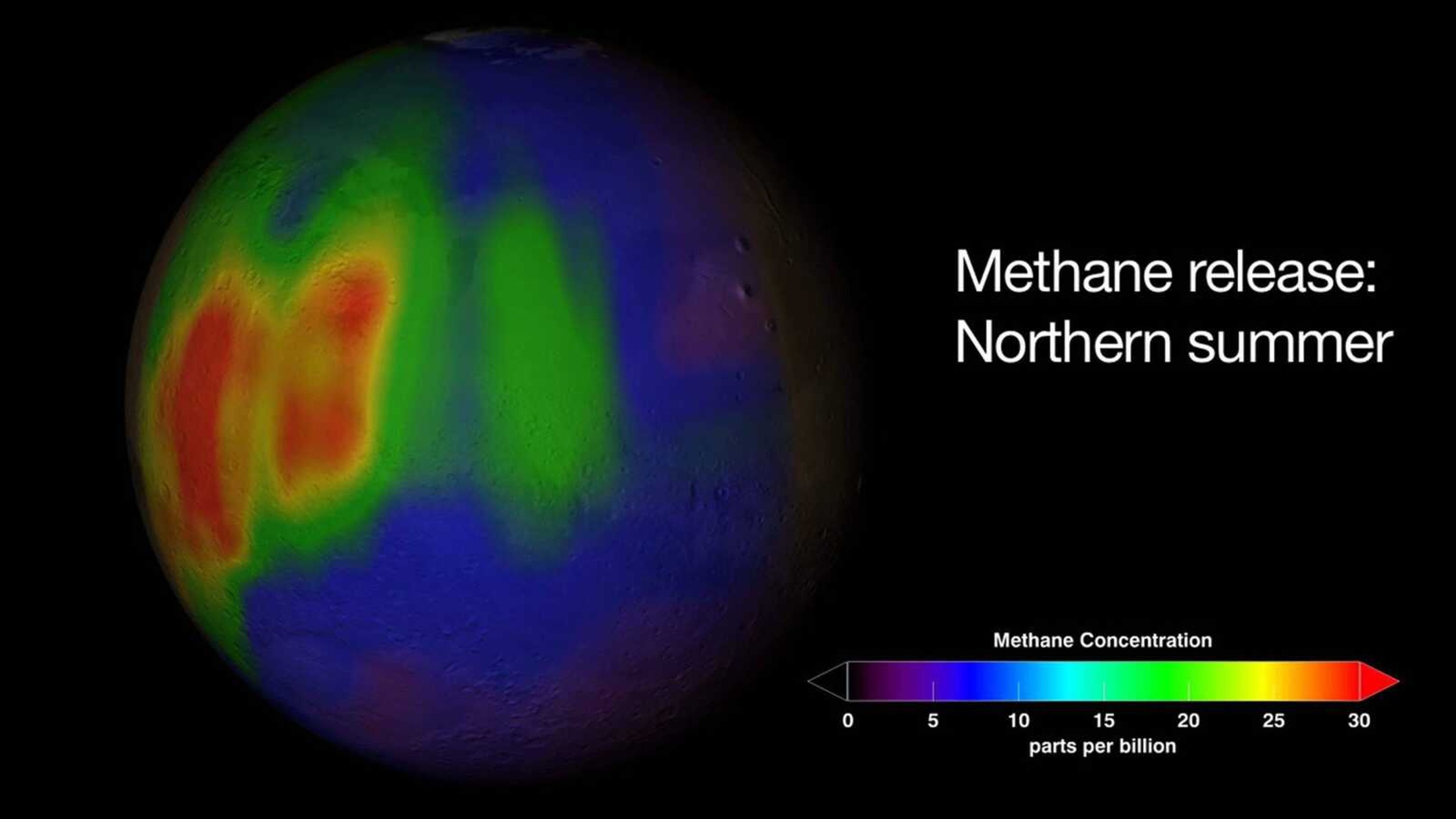WASHINGTON -- A surprising and mysterious belch of methane gas on Mars hints at possible microbial life underground, but also could come from changes in rocks, a new NASA study found.
The presence of methane on Mars could be significant because by far most of the gas on Earth is a byproduct of life -- from animal digestion and decaying plants and animals.
Past studies indicated no regular methane on Mars. But new research using three ground-based telescopes confirmed that nearly 21,000 tons of methane were released all at once during the late summer of 2003, according to a study published Thursday in the online edition of the journal Science.
"This raises the probability substantially that life was there or still survives at the present," study author Michael Mumma of NASA's Goddard Space Flight Center said. "We think the probability is much higher now based on this evidence."
But Mumma also said claims of life need far more evidence and this isn't nearly enough.
The Mars belch is similar to what comes out of the waters near Santa Barbara, Calif., which comes from decaying life in the sea floor. Microbes in the Arctic and other Earth environments that don't use oxygen still release methane and they have been examples of the type of life astronomers look for on other planets.
By 2006, most of the methane had disappeared from the Martian atmosphere, adding to the mystery of the gas, Mumma wrote.
Until the study, astronomers had debated whether "whiffs of methane" on Mars were real, said Brown University geologist Jack Mustard, who wasn't part of the research. That debate is pretty much over with this paper, he said.
Now "we can start the even more contentious debate about the source," said Carnegie Institution astronomer Alan Boss, an expert on looking for life on other planets. "Is it from life (past or present) buried below the surface of Mars, or does it come from a more prosaic source such as geochemical processing of rocks?"
Mustard said the discovery is "intriguing, exciting and definitely worth pursuing" but he leans against it being from life.
The methane was released in the Martian western hemisphere, near an area called Nili Fossae. That spot was considered but rejected last month as a possible landing site for NASA's next Martian rover.
Connect with the Southeast Missourian Newsroom:
For corrections to this story or other insights for the editor, click here. To submit a letter to the editor, click here. To learn about the Southeast Missourian’s AI Policy, click here.







